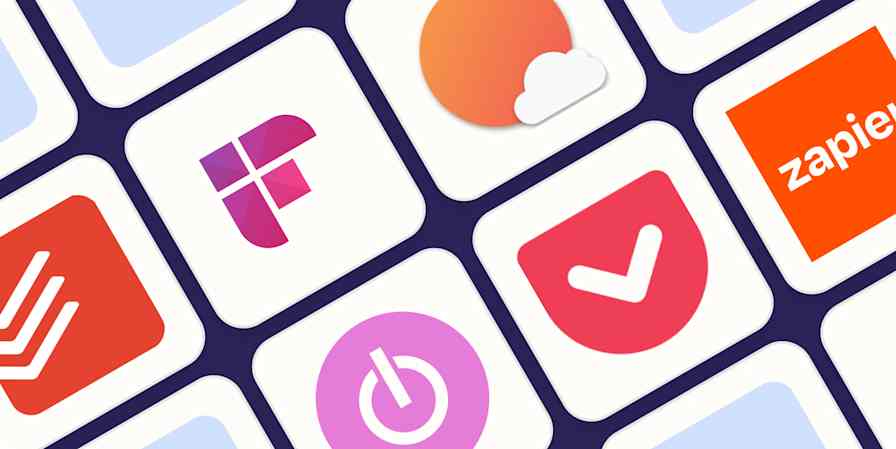Last year, your company rolled out a new product. It hasn't gained any traction. And yet, you're still putting time, money, and sweat into the failing proposition. "We can't quit now. We've already invested so much."
Welcome to the fascinating and frustrating world of cognitive bias—it's full of challenge and opportunity. And although cognitive biases exist only in our heads, they affect everything around us, including our work.
What Is Cognitive Bias?

Cognitive biases are common thinking errors that hinder our rational decision-making.
We don't always see things as they are. We don't simply glean information through the senses and act on it; instead, our minds give that info their own spin, which can sometimes be deceptive. The inner experience is not always in perfect sync with what's going on in the outer world.
The concept of cognitive bias was introduced in 1972 through the work of researchers Amos Tversky and Daniel Kahneman and was later popularized in the bestseller Thinking, Fast and Slow. Scientists such as Richard E. Nisbett and Nassim Nicholas Taleb have expanded upon it, and authors such as David McRaney have helped bring it into the mainstream. A piece by Ben Yagoda, "The Cognitive Biases Tricking Your Brain," provides an introduction to the subject and key players.
As humans, we didn't evolve to make logical decisions—we evolved to survive. And cognitive biases may have helped serve that purpose. But the modern world presents many scenarios that demand more rational calculations, and we're often left frustrated, wondering why our best thinking doesn't get us the results we want.
The bad news is that we can't get rid of cognitive biases. The good news? The better we understand them, the more often we can subvert them—or even leverage them for our own benefit.
The first step toward overcoming cognitive biases is to acknowledge that we have them. The most sophisticated thinkers fall prey to their own cognitive biases, so at least we're in good company. The second step is to take advantage of tools that can help balance out our own irrational tendencies. Nothing cools a hot head like an ice-cold algorithm.
With that, here are eight common cognitive biases and some tools that can help you overcome them—or use them to your professional advantage.
Optimism Bias
Optimism bias is our tendency to overestimate the odds of our own success compared to other people's. Think of the Silicon Valley entrepreneur who's sure that their new startup will succeed in a crowded market in which the vast majority of competitors fail.
It makes sense that we think this way. Evolution generally favors optimists: Those who take risks and believe they can succeed are more likely to pass their sunny genes on to the next generation. And entrepreneurs and leaders are required to bet against the odds, avoid analysis paralysis, and drive innovation. So when the stakes are high—which they usually are in business—optimism bias is bound to be part of the game.
But optimism is strong medicine, and a little goes a long way. Overly optimistic predictions can be dangerous, leading us to waste time and resources pursuing unrealistic goals. In the real world of business, things don't always work out for the best, and it serves us well to know when conditions are not on our side.
How to control your optimism bias
To fight the potentially adverse effects of optimism bias, be skeptical of your own rosy expectations for your work. Assume projects will be more difficult and more expensive than you initially think they will. Don't trust your good ideas to manifest through positive thinking—be ready to fight for them.
But most importantly, trust the numbers. Numbers are firm but fair, and getting intimate with your business's cash flow can help you make more rational decisions.
PlanGuru is the most robust and detailed financial forecasting software for businesses. It can help you separate daydreams from possibilities and get a realistic picture of what sacrifices need to be made. Or make use of a broader business dashboard, which will give you a big-picture look at how your company is doing according to a variety of metrics.
Negativity Bias
Negativity bias is the tendency to change our thought processes and behaviors more because of negative things than we do because of neutral or positive things.
Unfortunately, negativity bias doesn't cancel out the optimism bias: Various cognitive biases work in concert even when they're inconsistent. Just as we're primed to assume things will fare better for us than they will for others, we also tend to dwell on the negative when it doesn't go that way.
Negativity bias was an advantage when it came to preparing for animal attacks back in the day. But most of our competitors and disgruntled customers don't want to rip out our organs and feast on our entrails. When we let the negative guide us at work, we overcomplicate our challenges and miss new opportunities.
For instance, have you ever fixated on one bad online review? It's detrimental to your business: You might damage your reputation by reacting harshly, you might miss chances to build stronger customer relationships with the majority of reviewers who like you, and you might even put resources into fixing the thing one single human didn't like.
How to control your negativity bias
Track your wins. It's easy to remember things that go wrong, so it's crucial to actively note things that go right. To offset negativity bias, use your favorite spreadsheet app, note-taking app, or digital journal to record objectives attained, new ideas realized, and positive effects your work has had on the lives of others. Review them in meetings, share them on your company chat, and take strength from them when you're struggling. It may seem cheesy at first, but it can help you stay grounded in reality—which will help your business thrive.
Ready to put this into action? Connect your company's email marketing tool or checkout solution to your team chat app to let your team know every time someone subscribes or makes a purchase.
Confirmation Bias
Confirmation bias is the tendency to focus on new information that confirms pre-existing beliefs and trivialize anything that might challenge those beliefs. When we become attached to our beliefs, we're really good at spotting facts that seem to support them. After all, it's easier to convince ourselves we're right than it is to consider another view.
You can probably think of dozens of examples of how this works in your personal life, but you need to keep an eye out for it at work too. Let's say you've published a blog post on a certain topic, and it gets a lot of social shares. You decide you should write more blog posts on that topic, but you check Google Analytics first. Sure enough, the post has higher traffic than usual, so you continue to write posts on that topic, ignoring the fact that the bounce rates for the post are high and the conversion rates are low. That's confirmation bias.
Any bad idea can look good if you want it to work. In teams, this feeds into the false consensus effect, the phenomenon by which we tend to assume that others, including our colleagues and customers, agree with us more than they actually do.
Confirmation bias can lead businesses to resist much-needed change, so it's important to keep it in check.
How to control your confirmation bias
Seek out information that goes against your pre-existing beliefs. If you think a project will succeed, go out of your way to brainstorm reasons it might not. Better yet, solicit feedback from your team before making your opinions known. Use a survey app to ask for anonymous feedback, and give dissenting voices a chance to respectfully break the consensus.
Sunk Cost Fallacy
The term sunk cost fallacy describes our tendency to commit to something just because we've already invested resources in it—even if it would be better to give up on it.
Let's say you've redesigned your company's home page. You spent months working with your UX designer, copywriter, and developers to get it just right. After the release, bounce rates increase, conversions decrease, and your site drops in SEO rankings. But you've spent so much time, energy, and money on it, so you continue to feed resources into it, instead of reverting to your old home page.
Commitment is important in business, but there's a fine line between perseverance and falling prey to the sunk cost fallacy.
How to control the sunk cost fallacy
If a product, strategy, partnership, or other work endeavor isn't working, it can be hard to cut ties and move on. The general advice here is to always reevaluate your processes in light of new evidence.
Daniel Kahneman recommends journaling as a way to unmoor your mind from past choices. There are plenty of journaling apps to choose from: For example, Intuition Journal is a goal-oriented journaling app designed to help users make wiser, more rational decisions over time. You can use it to track your projects and determine which investments are paying off, which are likely to pay off soon, and which you should abandon before they drain you.
Listen to this pep talk from Seth Godin, all about the opportunities you can discover when you're willing to walk away.
Anchoring Effect
The anchoring effect is the tendency to privilege the first information we encounter, even when subsequent information turns out to be more relevant or realistic.
For example, in salary negotiations, it's best to be the first to say a number: According to the anchoring effect, you've now set the expectations for the rest of the discussion.
For businesses and teams driven by metrics, the anchoring effect often manifests as an inappropriate emphasis on certain metrics over others, even if the other metrics may be more useful in meeting broader goals. If you started a project with a desire to increase lead generation, you might become laser-focused on your lead numbers without considering if they're qualified leads who are more likely to convert.
How to control the anchoring effect
Because the anchoring effect can give you blinders for specific metrics, be sure that you're always reviewing data from new angles.
Use a report or chart app to generate reports. By experimenting with different data visualization concepts, you may notice new, different, and more powerful patterns. Zoho Reports, for example, creates free-form reports, making it easy to look at the same data in a variety of ways so you won't perseverate on the metric you encountered first.
IKEA Effect

The IKEA Effect is why we get attached to things when we had a hand in creating them. And yes, it's referring to that Hemnes dresser you put together.
Researchers from Harvard, Yale, and Duke identified our tendency to assign greater value to products if we play a part in their assembly. It echoes the sunk cost fallacy: We're not prioritizing the object/project as much as we are the resources we've put into it.
The IKEA Effect can apply to anything in which we invest creativity and labor. This can get dicey at work when you start to think that your own projects are more valuable than they are in the scheme of things—and you expect everyone else to agree.
How to control the IKEA effect
The good news: The IKEA effect is easy to put to good use at work. You can do it for yourself by getting deeper in the weeds of the project you're a part of. For example, designers and copywriters may want to learn basic coding, so they can take more active roles in how their work appears online.
You can also leverage the IKEA effect for your team. When strategizing new projects, use mind mapping tools. Various stakeholders can contribute their ideas in the beginning by physically adding them to a mind map, making each person more invested in the end result.
Goal Gradient Effect
The goal gradient effect explains why we work harder to achieve our goals when they're most closely in sight.
In user experience design, which is all about working with common cognitive biases, this effect inspires progress-tracking bars and other visual cues for users. If a user knows they're close to completing their task, they put more effort into finishing it.
At work, you might notice that you and your coworkers sprint toward a project's finish line once you can see the light at the end of the tunnel. While that's not a bad thing on its own, ideally you'd have that same enthusiasm and motivation throughout your project—not just toward the end.
How to control the goal gradient effect
Visualize your work in ways that allow you to see how far you have to go.
Developed by Toyota, the Kanban process illustrates the entire workflow of a project and helps place everything in context. Use a Kanban Board task management app for complex or long-term projects so you can see how much you've already achieved.
You can also consider taking the MVP approach. By working toward smaller, more attainable goals, you'll always feel like you're nearing the end of some part of a project, which will kick the goal gradient effect into action more often.
When we're deeply focused—especially when we're learning something new—sometimes an interruption can help cement our recall. This is the Zeigarnik Effect, a discovery from the field of Gestalt psychology. Research indicates that, if we take a break from a task before we're finished, we remain mentally engaged with it before we come back to get closure. And during our breaks, when we take time to catch our breath and let new information percolate, we can gain fresh insights and stumble upon new solutions. To leverage this effect, try a Pomodoro timer app. The Pomodoro Technique is designed to keep your focus sharp by staggering quick bursts of productivity with short breaks.
Cognitive Miser Theory
Daniel Kahneman's research is largely dedicated to exhaustively proving one core proposition: Our brains are lazy. And according to the cognitive miser theory, we tend to put the least amount of effort possible into problem-solving. We are apt to minimize cognitive effort and save our strength for when it's most needed. If we're not consciously engaged with the details, we're likely to take any shortcut that presents itself.
This can hurt us when we don't have the right systems in place for handling everything that matters. Some tasks seem routine but are essential to get right. For example, you may be exhausted from hours of organizing notes or creating pivot tables, but one careless error can cost you dearly. You've overtaxed yourself, and now your company is exposed to hundreds of thousands of dollars in tax penalties.
How to control cognitive miser theory
We're just beginning to understand how our brains handle cognitive offloading in the age of the internet. Don't think too hard, but take your thinking seriously. Mindful and deliberate choices about how we apply our mental effort can help us establish patterns that eliminate friction and emphasize our strengths.
The projects that turn us into cognitive misers are the ones we're not as engaged with—usually the menial tasks. So why not prevent a lot of human error by assigning some grunt work to a robot colleague? Zapier lets you automate workflows, eliminate manual processes, and free up your bandwidth for making decisions you care about.
Before we can offset our cognitive biases or use them to our advantage, we must admit that we have them, we always have, and we probably always will—at least until we've uploaded ourselves into the cloud. To be human is to be biased.
We are no less human at work, especially if we expect ourselves to be cool and rational all the time. If we get intimate with our own biases, we stand a better chance of noticing them as they come into play and making better-informed decisions when we've factored them into our professional decision-making. And by implementing the right tools, we can even use cognitive bias to our advantage.
Image of lightbulb from Morgan4uall vis Pixabay. Image of drill from bidvine via Pixabay.









